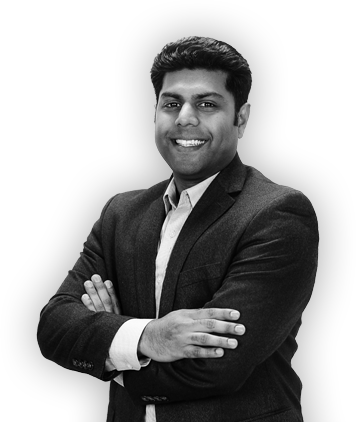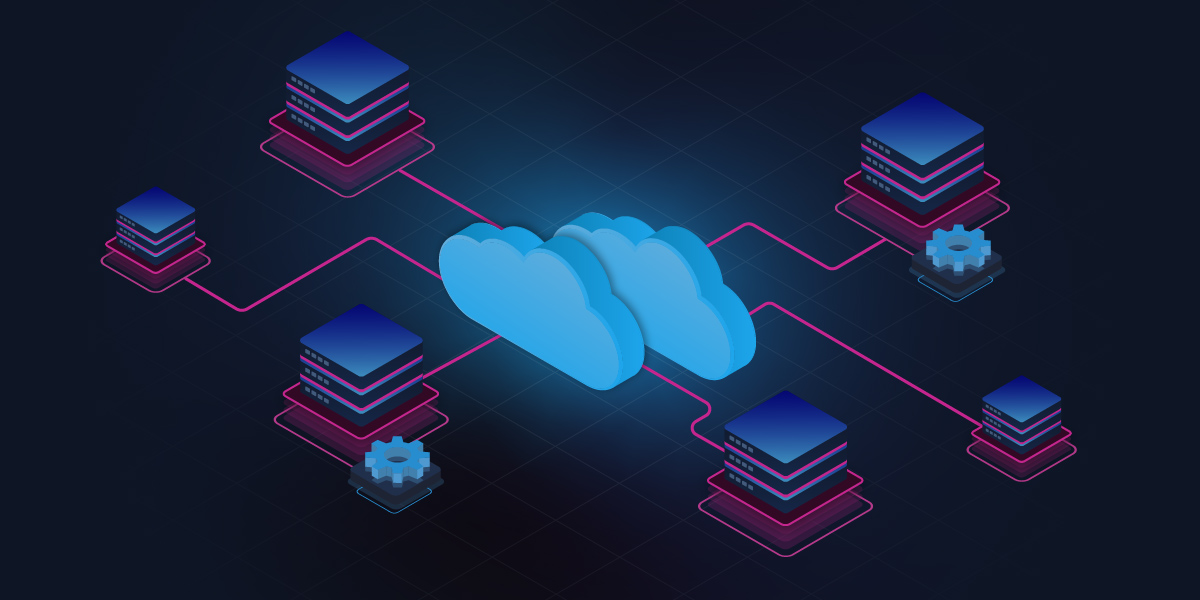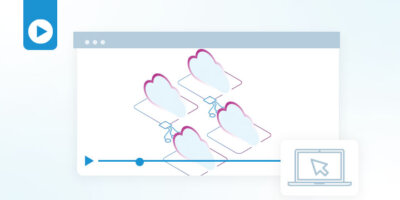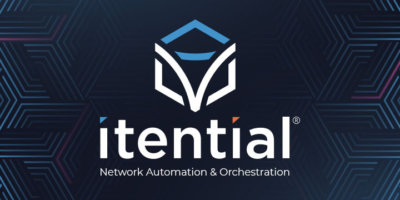The recently debuted 2023 Multi-Cloud Networking and NaaS Survey Report from Futuriom, a leading cloud and networking technology research firm, contains valuable insight and survey data for leaders looking to make future-fit cloud decisions. The report shows that organizations are shifting (or have already shifted) to a hybrid, multi-cloud approach for their infrastructure, enabling new approaches but requiring solutions for new challenges at the same time.
This year, there’s a clear focus on the importance of multi-cloud networking technologies that help teams build a streamlined, integrated process for automation across disparate elements of their cloud and network infrastructure.
You can check out the full report here. Let’s get into the key takeaways.
Hybrid Cloud Is Driving Adoption of Multi-Cloud Networking Innovations

With 56% of respondents using at least two cloud environments, it’s clear that multi-cloud is becoming the industry standard.
Multi-cloud strategies promise a lot of benefits including application deployment anytime, anywhere across the globe, best-of-breed choices around cloud native offerings, and avoiding vendor lock-in. However, this approach also results in a vastly distributed infrastructure that spans a combination of multiple cloud platforms, existing on-premises resources, and co-located data centers — a potential challenge for streamlined management and automation.
When it comes to your network team(s)’ day-to-day activities, network automation efforts, and security requirements, the goal becomes finding a way to scale your approach without using too many different automation tools across different systems, networks, and clouds.
Of the Futuriom survey respondents, 59.20% said “seamless multi-cloud networking connectivity among data center, edge, telecommunications provider, and public cloud” services was ‘Very Important.’ And 31.20% said that it was ‘Critical.’ A majority of respondents (66%) expect the arrival of services such as 5G networks, edge compute, and private wireless to increase their need for multi-cloud networking technologies as well.
MCN (multi-cloud networking) technologies enable “faster, programmatic networking connectivity among disparate networking domains.” Innovations in the space are helping enterprises accelerate their shift toward successful hybrid and multi-cloud — innovations like new solutions for integration, automation, and orchestration across these distributed environments.
Integration, Automation, & Orchestration: How to Operationalize Multi-Cloud Networking
Usually, network teams get started with automation by building scripts with Python or Playbooks with Ansible. These can accomplish individual tasks and help ease the load of traditional manual operations. However, when your environment includes, maybe three public cloud providers, multiple data centers across the world, edge resources, and more, your automation engineers need more advanced solutions to orchestrate across multiple domains and systems.
“Network operators don’t want a fragmented collection of networks,” Futuriom states. “They want to see one abstracted, logical network to connect their end users, applications, and services.” This means adopting platform solutions that offer universal integration capabilities so that network and cloud automation can leverage everything in your digital infrastructure.
Integration isn’t that useful in a vacuum, of course. It’s a prerequisite for effective automation across your hybrid, multi-cloud environments. The integration capabilities will help you bring everything into one centralized platform — CLI scripts, automations for public cloud services, IPAM, security, ticket management, all of it. Then, using that same platform, your network automation engineers can build automations across every different system and domain in your infrastructure without manually swivel-chairing between tools.
Finally, orchestration is what some call “automation of automations.” It means taking a collection of automations and leveraging integration capabilities, data manipulation, and more to build a complete, zero-touch, end-to-end process. Advanced network teams package up orchestrated network change workflows and publish them for others in their IT organizations to use, dramatically accelerating collaboration between application and IT teams and the network and increasing the positive impact of network infrastructure on innovation.

Above, see the top three ROI metrics picked by Futuriom respondents to see what industry leaders are waking up thinking about (and avoid the same fate!). A successful adoption of multi-cloud networking technologies can deliver on key priorities in the era of hybrid and multi-cloud environments.
How Itential Enables Multi-Cloud Success
Futuriom lists the Itential Automation Platform as an example of one of these platforms, the solutions that offer integration, automation, and orchestration capabilities to streamline and accelerate hybrid and multi-cloud success. “With Itential’s automation platform,” the report states, “operators can operationalize and automate complex network configuration and networking tasks” and “bridge the gaps in multi-cloud environments.”
Itential supports a wide range of integrations with cloud providers and management solutions including AWS, Google Cloud Platform, Microsoft Azure, Aviatrix, Alkira, VMware, Kubernetes, Zscaler and others; allowing network and cloud teams to automate even the most complex multi-cloud network environments.
In addition to Pre-Built integrations and automations, the Itential Automation Platform also leverages API standards to auto-generate integrations based on API documents, enabling teams to easily integrate all the systems and tools they use today with our centralized network automation solution.
Other key advantages of the Itential Automation Platform for multi-cloud automation include a low-code and no-code workflow builder, the ability to publish automations with built-in safeguards and validation for others to run risk-free, and the fact that all of our integrations are included with our software (unlike some competitors that charge per integration!). You can dive into all the features and capabilities that set Itential apart for hybrid and multi-cloud environments here.

As we continue to move toward a fully hybrid and multi-cloud model for digital infrastructure, leaders are looking ahead to determine which investments will have the most impact. To dive deeper into the research and data in the 2023 Multi-Cloud Networking and NaaS Survey Report, click here. And next time you’re faced with a big decision about your cloud and network infrastructure, the insights from Futuriom’s report might just help you make the right choice.





